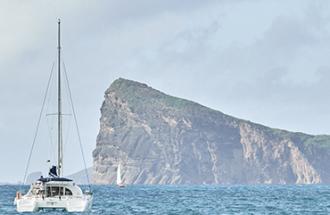Cultural
A trip to Mauritius would be incomplete without an immersion in its culture. The cultural richness of Mauritius comes from the diversity of the many communities living there. Mauritian people are mainly from European, Asian and African descent, and this has formed an extraordinary melting pot. Different religions and traditions live in peace and harmony in the island today.
From food to places of worship and music, everything in the Mauritian life brings you back to the diversity and cultural richness of the population. It is even difficult to designate a symbolic national dish today because there are several dishes from various origins that could aspire to this title, such as the chicken curry, fried noodles, dholl puri, Chinese dumplings and the bryani… Anyway, Mauritian food is known to be delightful and, although it is inspired from other countries’ cuisine, it has a special flavour that makes it unique.
The places of worship found all along the Mauritian scenery are the testimony of the peaceful cohabitation of local communities. Many of these buildings or sites must be added to your itinerary, whether for their historical or cultural interest. Grand Bassin, or Ganga Talao, a high place of pilgrimage for the Hindus is worth visiting. It is a dormant volcano nestled in the heart of lush nature, where you can recharge your batteries. The Hindu temple of Maheshwarnath Mandir in Triolet and the Jummah Mosque, the Grand Mosque of Port Louis, and the Kwan Tee Pagoda, also in the capital city, are also outstanding buildings to see. History and architecture enthusiasts will be interested in the various churches of the island, many of them built since the 18th century, like that of Saint Francis of Assisi in Pamplemousses, the oldest still standing.
Several protected sites trace the history of Mauritius in the colonial era and are worth a stopover. The Aapravasi Ghat, where Indian labourers landed in the 19th century, and Le Morne region, where runaway slaves used to hide, both UNESCO World Heritage sites, as well as the large Creole-style mansions such as the Domaine de Labourdonnais and Maison Eureka, are all sites to be on your holiday itinerary in Mauritius.
Culture is also a country’s musical heritage. In Mauritius, the various communities of the island have contributed to create a musical culture that is unique to the island, and recognised throughout the world thanks to their inscription to the UNESCO World Heritage, like the Sega Tipik of Mauritius, the Geet Gawai, the Sega Tambour of Rodrigues and, more recently, the Sega Tambour from Chagos. The Geet Gawai is more precisely a ceremony held during Hindu weddings and consists of rituals, prayers, rhythmic music, songs and dances.
And to immerse yourself even more in the Mauritian culture, start learning the common Creole words and expressions to use without moderation during your stay!




